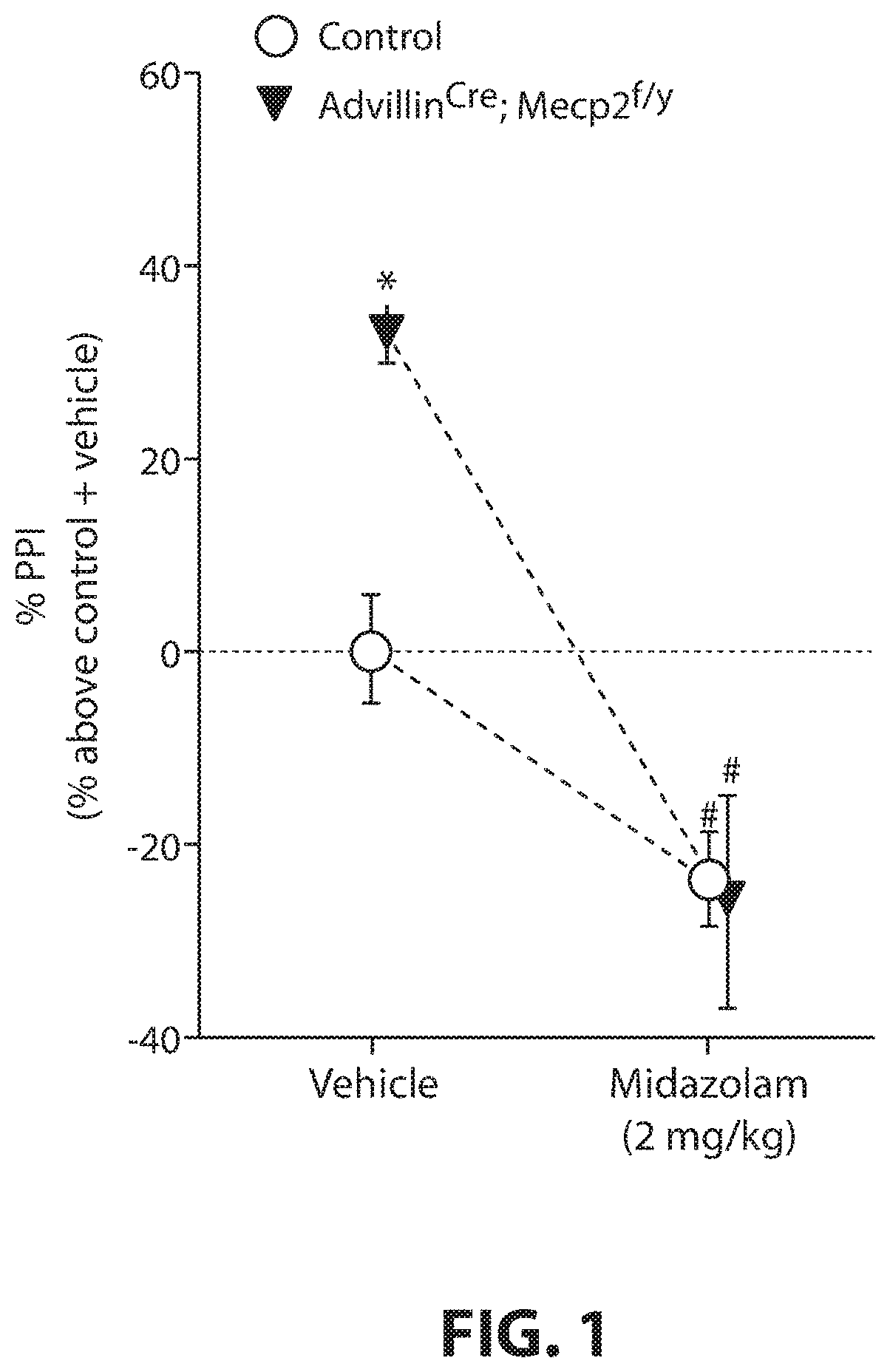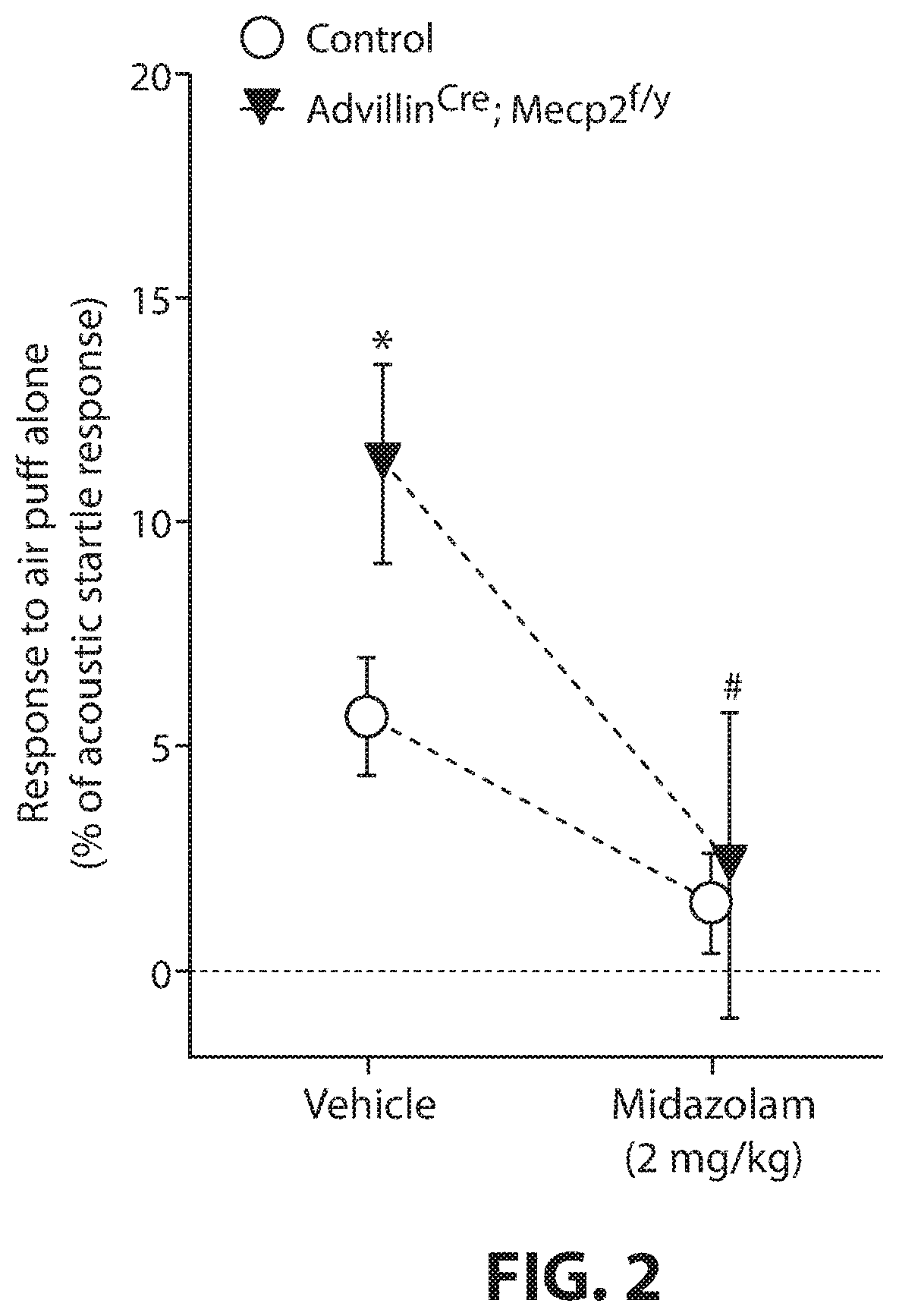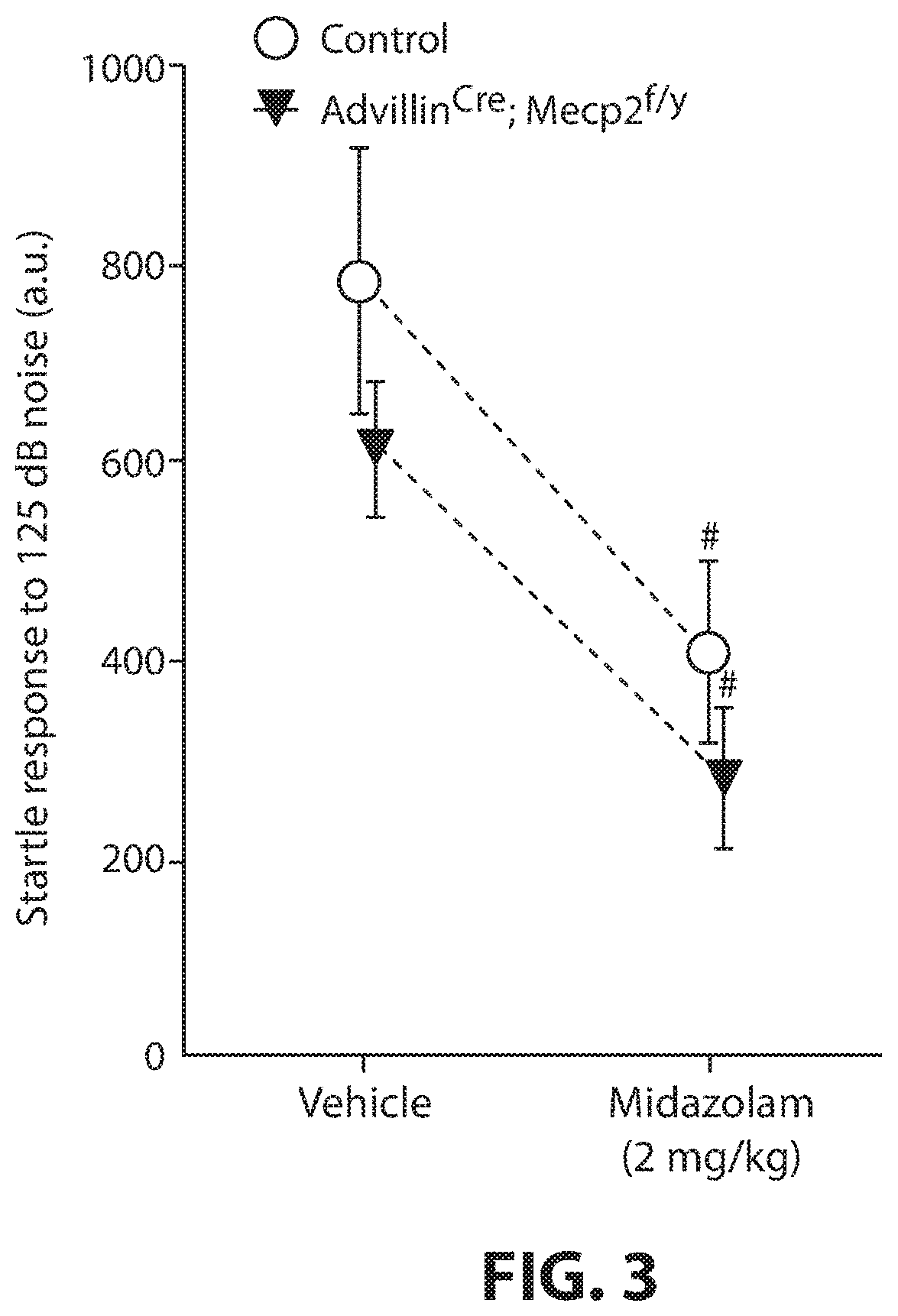Compositions and methods for reducing tactile dysfunction, anxiety, and social impairment
a technology of social impairment and anxiety, applied in the field of compositions and methods for reducing anxiety and social impairment, can solve the problems of no fda-approved treatment, and achieve the effect of reducing anxiety or social impairmen
- Summary
- Abstract
- Description
- Claims
- Application Information
AI Technical Summary
Benefits of technology
Problems solved by technology
Method used
Image
Examples
example 1
of Compound 1
General Procedure for Preparation of Compound 7-4B
[0170]With reference to FIG. 4, to a solution of compound 7-3 (1.00 g, 3.51 mmol, 1.00 eq) in THF (20.0 mL) was added LDA (2.00 M, 5.27 mL, 3.00 eq) at −78° C. The mixture was stirred at −78° C. for 1 hr. Next, a solution of compound 3A (1.27 g, 10.54 mmol, 3.00 eq) in THF (5.00 mL) was added at −25° C. and the mixture was stirred at −25° C. for 3 hr. TLC (Petroleum ether:Ethyl acetate=1:1, Rf=0.63) indicated compound 7-3 was consumed completely and one major new spot with lower polarity was detected. The reaction mixture was quenched by addition H2O (50.0 mL) at 25° C., and then extracted with EtOAc (40.0 mL, 20.0 mL, 10.0 mL). The combined organic layers were dried over Na2SO4, filtered and concentrated under reduced pressure to give a residue. The residue was purified by column chromatography (SiO2, Petroleum ether:Ethyl acetate=40:1 to 2:1). Compound 7-4B (700 mg, 2.16 mmol, 61.4% yield) was obtained as a yellow soli...
example 2
of Compounds 2 and 3
General Procedure for Preparation of Compound 7-2
[0177]With reference to FIG. 5, a mixture of compound 7-1 (5.00 g, 20.3 mmol, 1.00 eq), 2-chloroacetyl chloride (34.5 g, 305 mmol, 24.3 mL, 15.0 eq) was degassed and purged with N2 for 3 times, and then the mixture was stirred at 25° C. for 5 hrs under N2 atmosphere. TLC (Petroleum ether:Ethyl acetate=2:1, Rf=0.45) indicated compound 7-1 was consumed completely and two new spots formed. The reaction mixture was quenched by addition H2O (80 mL), and then diluted with EtOAc (50 mL) and extracted with EtOAc (30 mL, 20 mL, 10 mL). The combined organic layers were washed with brine (30 mL), dried over Na2SO4, filtered and concentrated under reduced pressure to give a residue. The residue was purified by column chromatography (SiO2, Petroleum ether:Ethyl acetate=10:1). Compound 7-2 (6.20 g, 19.2 mmol, 94.5% yield) was obtained as a yellow solid. 1H NMR: 400 MHz CDCl3, δ 7.81 (d, J=7.60 Hz, 2H), 7.62-7.79 (m, 2H), 7.48-7....
example 3
of Compound 4
General Procedure for Preparation of Compound 10-2
[0183]With reference to FIG. 6, To a solution of compound 10-1 (5.00 g, 21.6 mmol, 1.00 eq) in DCM (35.0 mL) was added TEA (6.55 g, 64.8 mmol, 3.00 eq) at 0° C., and then a solution of compound 10-1A (8.71 g, 43.2 mmol, 2.00 eq) in DCM (15.0 mL) was added drop wise. The mixture was stirred at 25° C. for 16 h. TLC (Petroleum ether:Ethyl acetate=4:1, Rf=0.43) indicated compound 10-1 was consumed completely and three new spots formed. The reaction mixture was diluted with H2O (200 mL) and extracted with EtOAc (150 mL). The combined organic layers were washed with brine (20.0 mL), dried over Na2SO4, filtered and concentrated under reduced pressure to give compound 10-2 (5.40 g, crude) as a light yellow solid which was used into next step without further purification.
General Procedure for Preparation of Compound 10-3
[0184]To a solution of compound 10-2 (5.40 g, 15.3 mmol, 1.00 eq) in NH3 / MeOH (7.00 M, 54.0 mL, 24.7 eq) was ad...
PUM
| Property | Measurement | Unit |
|---|---|---|
| mole fraction | aaaaa | aaaaa |
| mole fraction | aaaaa | aaaaa |
| mole fraction | aaaaa | aaaaa |
Abstract
Description
Claims
Application Information
 Login to View More
Login to View More - R&D
- Intellectual Property
- Life Sciences
- Materials
- Tech Scout
- Unparalleled Data Quality
- Higher Quality Content
- 60% Fewer Hallucinations
Browse by: Latest US Patents, China's latest patents, Technical Efficacy Thesaurus, Application Domain, Technology Topic, Popular Technical Reports.
© 2025 PatSnap. All rights reserved.Legal|Privacy policy|Modern Slavery Act Transparency Statement|Sitemap|About US| Contact US: help@patsnap.com



